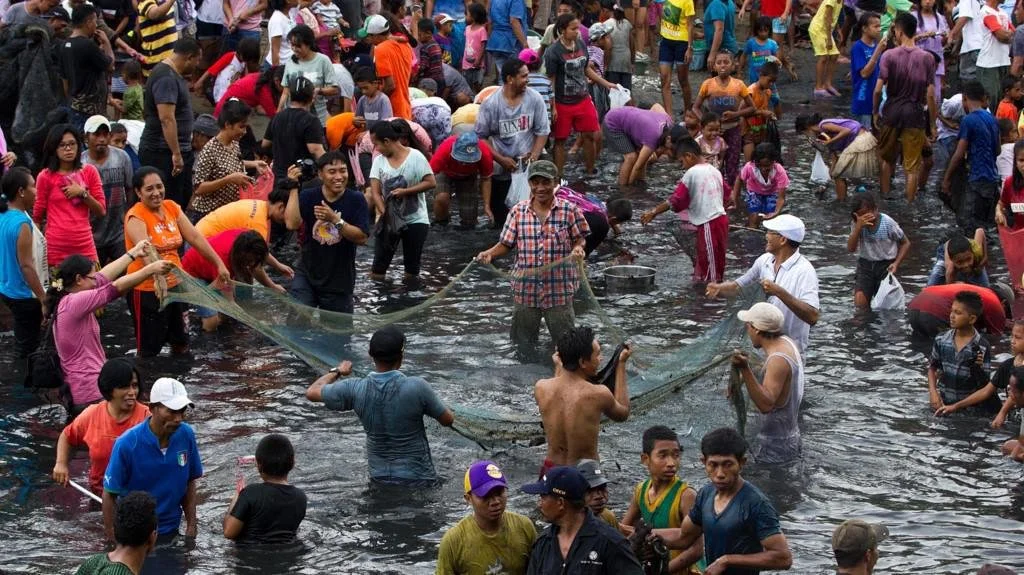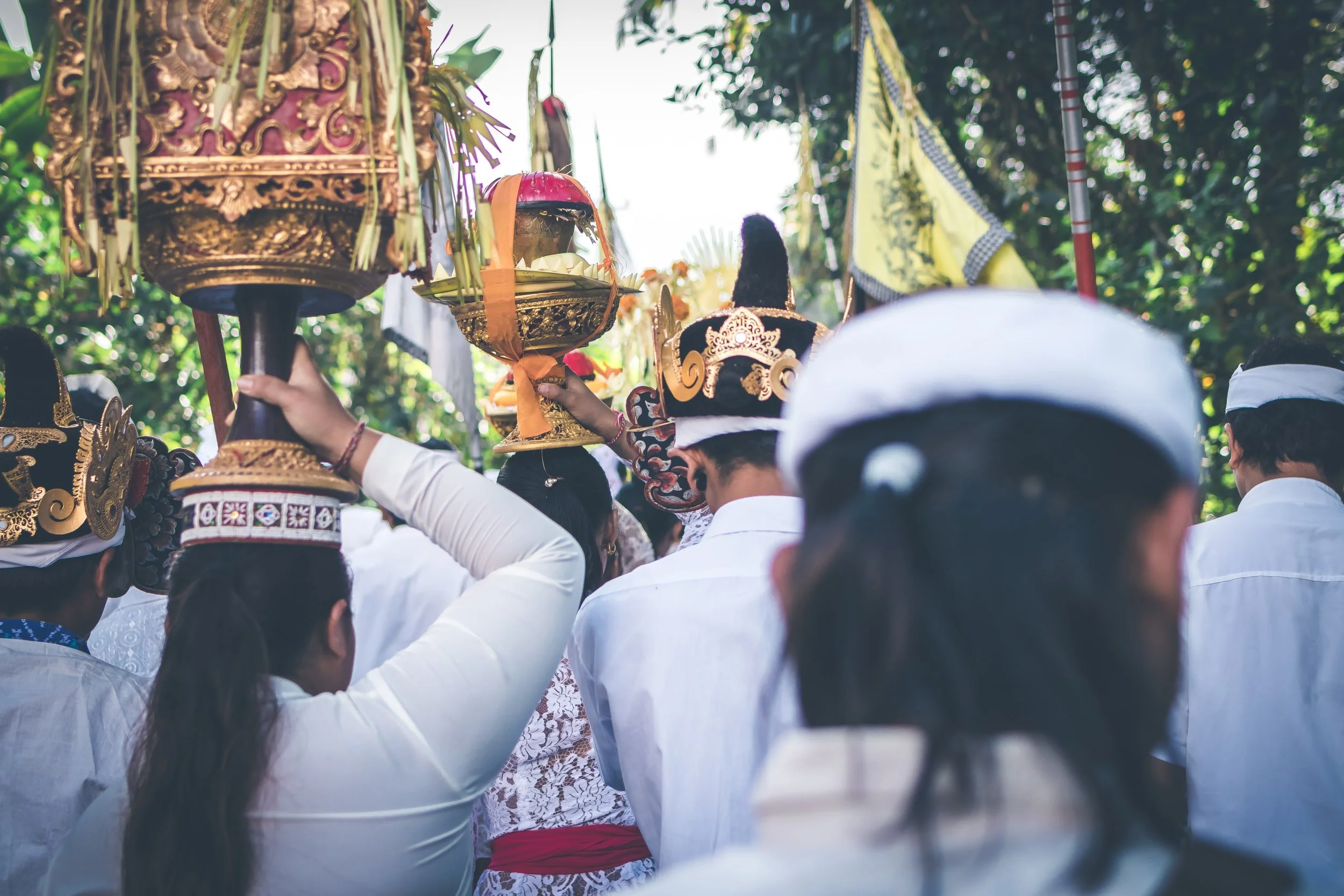Local traditions promoting nature conservation: Sasi and Nyepi Segara
As an archipelagic state, Indonesia is diverse and rich in natural resources. Indonesia is the second-largest country in mega biodiversity after Brazil. With more than 16 thousand islands and 62% of the water area, Indonesia has enormous potential, especially in the fishery. Ministry of Marine Affairs and Fisheries reported that there are around 8,500 fish species living in Indonesian waters, with 1,300 of them in freshwater. Furthermore, Indonesian waters also possess 14% of the world’s coral reefs, more than 700 types of seaweed (macroalgae), more than 2,500 types of mollusks, and more than 1,400 types of echinoderm. Seeing this, Indonesia is also known for its marine mega diversity.
For decades, Indonesia’s marine mega diversity has helped provide various commodities, increase export value, and eventually contribute to Indonesia’s tax income in fisheries. Hence, it is critical for the government and for the citizens as well to protect and preserve the sea.
The biggest threat to marine biodiversity has been climate change and its implication for the sea. For example, the surging temperature of the sea is putting coral reefs in an alarming state. National Geographic Indonesia mentioned that it has accelerated the bleaching of the reefs can hinder their growth and to an extreme degree, can cause massive death. Another critical marine species endangered by the rising temperature of the sea is krill, a tiny shrimp that is crucial in the food chain. They reproduce less when the temperature is high, causing food shortages for larger predators. Moreover, human activities such as catching fish with illegal tools (i.e. tiger trawl and explosives) are common yet extremely harmful to underwater species.
The government has adopted numerous legal arrangements to preserve Indonesian waters. It is worth mentioning that under the then-Minister of Marine Affairs and Fisheries, Susi Pudjiastuti, the Ministry had done an incredible job protecting the sea. Nonetheless, the effectiveness of the regulations is inseparable from the role and efforts of local communities in keeping their tradition or local custom to protect the sea biodiversity. Needless to say, these local traditions are the key to achieving sustainable marine biodiversity.
Protecting the natural resources: Sasi tradition from Maluku and Papua
Sasi (or can be translated as “prohibitions”) is a generational tradition and custom that comprises both written and unwritten rules that regulate how local communities or adat communities should preserve the environment and its abundant natural resources. There are certain prohibitions and permission to obtain particular natural resources at a specific time. With these customs, the adat communities are taking a huge part in sustaining and preserving the environment and its biodiversity. This custom is a collective effort of adat communities in various areas in Indonesia such as Manado and Papua that still applies today.
There are generally three types of sasi that are related to environmental protection, sasi laut (sea), sasi darat (land), and sasi sungai (river). Sasi will have an “opening” and “closing” time to determine when Sasi should start and finish respectively, during which will be called “rest time”. There is no definite time for all kinds of Sasi; some can take weeks, some months, some years, or some even take decades. The duration also depends on the urgency to protect certain species. For example, for endangered species, it will take longer for sasi. Therefore, the adat communities are only allowed to catch certain fish only in a predetermined period of time.
Sasi laut regulates the time when adat communities will be allowed and prohibited to cultivate particular sea resources. The implementation of sasi will provide time for the marine resources to reproduce. Only when the “opening” ritual of Sasi is conducted, can they start to harvest that particular resource because this means that sasi is lifted and finished. According to Mossy, some of the examples for sasi laut are:
Constraining the use of fishing gear other than a fish net and only using the fish net by foot and the depth of the net is limited to only an adult’s waist
There is a line for sasi laut, only 200 m from the village hall to west and south part of the sea
In the free zone area, the communities are allowed to catch fish using a cast net without any dispute - shall there be any dispute, the zone will be considered as Sasi (prohibited)
The same traditions and customs also apply to Sasi laut. What differs between sasi laut and sasi darat is what they protect. As the name suggests, sasi laut focuses on marine and sasi darat focuses more on land resources. There are prohibitions and limitations to exploit land resources, for example:
Prohibition to harvest immature resources such as coconut, nutmeg, and clove
Prohibition to cut trees that are growing near the sea
Essentially, sasi sungai is also pretty much similar to the previous two sasi, only the location is different. Sasi sungai exclusively manages what is prohibited in regards to the activities in the river. Judge and Nurizka mentioned several prohibition examples from the sasi sungai:
Prohibition to wash kitchenware, cutleries, and clothes in the river
Prohibition to chop down the trees around the river, except sago palm
By implementing sasi tradition, not only do the adat communities sustain the resources, but they also optimize their yield as well. In essence, sasi tradition comprises prohibitions and limitations in reaping natural resources—especially the threatened-to-extinct ones. The community will be guided by the opening ritual of sasi which marks the beginning of the prohibition/limitation and the closing ritual of sasi which signifies the end of the prohibition/limitation.
Preserving marine biodiversity: Nyepi Segara in Bali
The word Nyepi Segara derives from two different words: nyepi and segara. Nyepi directly translates to silence, tranquil, serene; while segara means the sea. On this one sacred day, the adat communities enable the sea to rest for a while from the bustling noises of human activities. This is also to remind them of the critical role of the coast in their survival.
Nyepi segara is implemented by adat communities in Nusa Penida island. Every fourth full moon, all sea activities around Nusa Penida will be stopped for a day. This means that fishers will pause their fishing activities, there will be no boat or ship from and to Nusa Penida, and tourism activities will be halted.
Nyepi segara is far from a one-off event that is only conducted for a day. Prior to this, there are numerous rituals from the adat communities with the same vision to preserve the ocean. Adat communities, especially the Hindus, will hold a ceremony to clean up the seashore and the sea itself from waste.
This tradition breathes the philosophy of Tri Hita Karana. It balances and harmonizes human’s relationship with God, people, and the environment. As a generational tradition that has been implemented for centuries, it also demonstrates the gratitude of the communities for what has been provided by the nature — without these resources, the communities’ survival would be improbable.
Sasi and Nyepi Segara are only two examples of numerous generational traditions that have been proven to work in line with the environment. Not only do they reserve as the philosophical foundation of adat communities, but they are also of practical use for the communities to protect mother earth. In light of this, it is crucial that we go back to our roots and reclaim what our ancestors have inherited through the existing local wisdom


